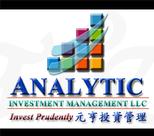 Author: Hengfu Hsu, Analytic Investment Covestor model: Deep Value, Earnings Growth, Opportunistic Value, Enterprise Value, Focus Value, and Dividend Disclosure: None According to Yahoo! Finance, the S&P 500 index finished the monthof May with a 1.35% loss, well below its 10-year average May return of 0.724% from 2001 to 2010. In May, trading volumes were very low across US exchanges, and historically June has been one of the worst months for the equity markets. Hence, we could see a wild swing in US equity markets this summer. As of May 31, 2011, the US equity market condition remains bullish based on the following factors we use to manage risk in our models:
Author: Hengfu Hsu, Analytic Investment Covestor model: Deep Value, Earnings Growth, Opportunistic Value, Enterprise Value, Focus Value, and Dividend Disclosure: None According to Yahoo! Finance, the S&P 500 index finished the monthof May with a 1.35% loss, well below its 10-year average May return of 0.724% from 2001 to 2010. In May, trading volumes were very low across US exchanges, and historically June has been one of the worst months for the equity markets. Hence, we could see a wild swing in US equity markets this summer. As of May 31, 2011, the US equity market condition remains bullish based on the following factors we use to manage risk in our models:
- Equity Earning Yield Over Treasury Yield (Cheap, Balanced, or Expensive): Cheap
- Equity Earning Trend (Up, Sideway, or Down): Up
- Credit Risk (Low, Normal, High, or Dangerous): Low
- Equity Volatility (Low, Medium, High, or Dangerous): Low
- Equity Money Flow (Positive, Neutral, or Negative): Neutral
- Yearly Equity Price Trend (Up, Sideway, or Down): Up
- Monthly Equity Price Trend (Overbought, Sideway, or Oversold): Oversold
According to Standard & Poors, as of May 31, 2011, S&P 500 operating earnings are expected to make an all time high at $97.94 this year. Current S&P 500 operating P/E of 15.43 (as of 6/1/11) is well below the 10-year average of 19.04, and historically the S&P 500 P/E ratio has a tendency of mean-reverting. With the European debt crisis, Japanese recession, a bad US jobs report, and good US corporate earnings momentum, we expect US market to offer attractive mispricing opportunities over the next several months and the US equity market to resume its uptrend later this year.
Models Review
In May, all our Covestor models remained fully invested based on our computer algorithms. The phrase “fully invested” means that our models use up to 100% of cash, and all our Covestor models do not use any form of leverage or margin.
In May, investors continue moving money into defensive dividend-paying stocks, and we probably will see this short-term trend continue until current broad market correction is over. According to Covestor’s calculation, six of our seven models underperformed the S&P 500 index in May. Dividend is our only Covestor model that outperformed the S&P 500 index in May, with a 0.52% gain. Our Dividend model holds 50 defensive dividend stocks and it has gained 6.49% for the three month period of 3/1-5/31/11, outperforming the S&P 500 index by 5.14%. Our weakest performing model over this three month period has been Opportunistic Value, down 10.55%.
Although we saw our Covestor models across the board underperform the market in May, our investment strategy remains the same. We rely entirely on our computer algorithms to indicate buys of undervalued stocks and sell overvalued positions, to monitor market conditions, and to manage risk in all models, so that human emotion and buy-sell bias are completely eliminated from the investing process, unnecessary market timing is avoided, and continuous participation in the market is enabled in the effort to produce long-term growth.
Disclaimer
Opening accounts of Analytic Investment Management LLC’s models through Covestor is not personalized investment advice, and Analytic Investment Management LLC does not take Covestor clients’ personal financial needs into consideration. Investing in the financial markets involves risk, including the risk of principal loss. Don’t invest with money you can’t afford to lose. Information in this report is in no way intended as personalized investment advice and should not be interpreted as such. Past performance is not necessarily indicative of future results. Performance results do not take into account any tax consequences. Focus Value and Focus ETF models are concentrated portfolios with less than 20 positions. Concentrated portfolios carry significantly more risk than diversified portfolios and may not be suitable for every investor.
Sources:
S&P Price Performance from Yahoo Finance, https://finance.yahoo.com/q/hp?s=^GSPC&a=00&b=3&c=1950&d=04&e=31&f=2011&g=m
“S&P Indices Market Attributes Series” Standard & Poors. http://www.standardandpoors.com/indices/market-attributes/en/us
